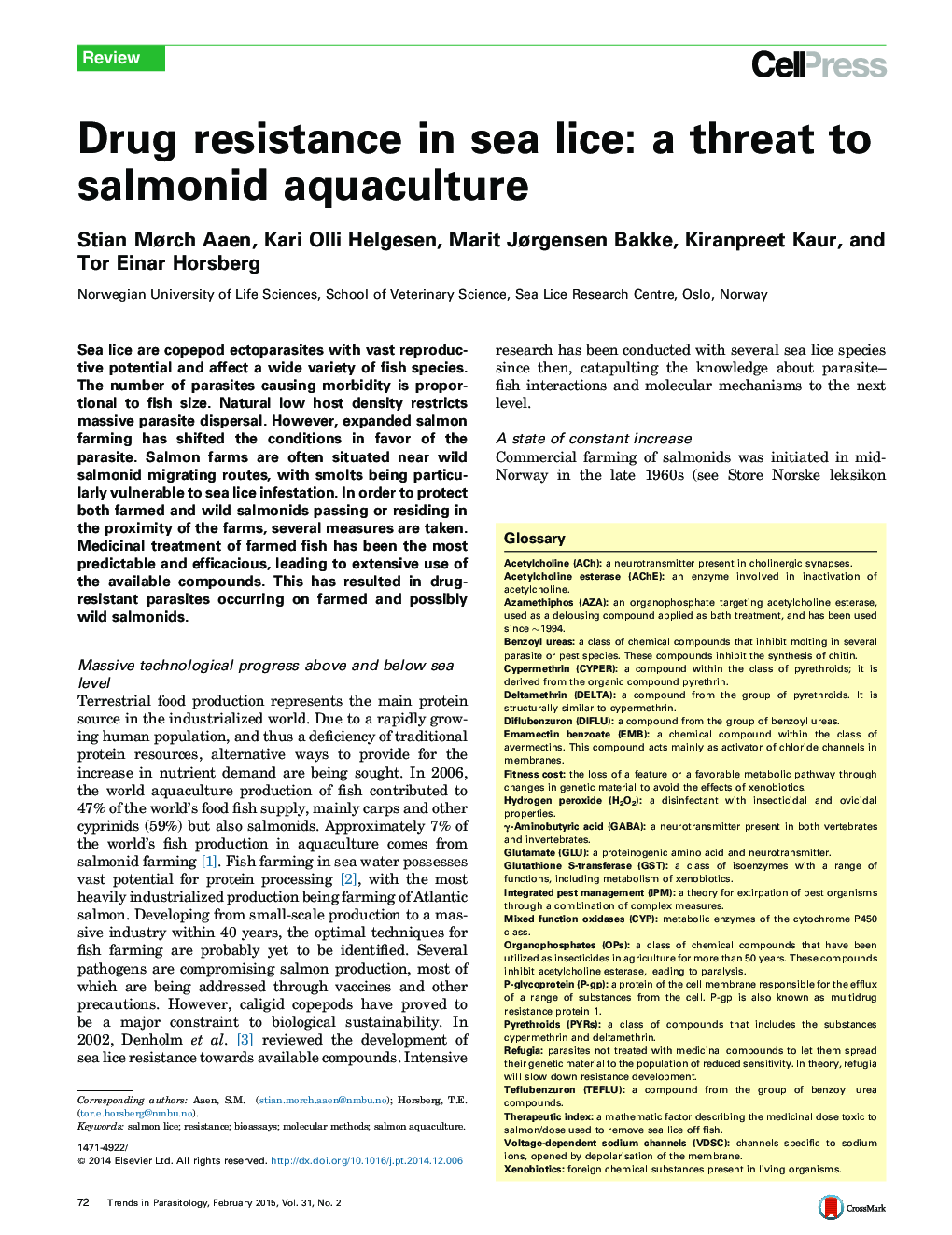| Article ID | Journal | Published Year | Pages | File Type |
|---|---|---|---|---|
| 3423007 | Trends in Parasitology | 2015 | 10 Pages |
•Drug-resistant sea lice are emerging in several salmonid-producing countries.•Of the five compound groups available, resistance has been reported towards three.•Efforts are being put into investigating genetic markers, physiology and biochemistry.•The sensitivity status of sea lice populations could thus be monitored more easily.
Sea lice are copepod ectoparasites with vast reproductive potential and affect a wide variety of fish species. The number of parasites causing morbidity is proportional to fish size. Natural low host density restricts massive parasite dispersal. However, expanded salmon farming has shifted the conditions in favor of the parasite. Salmon farms are often situated near wild salmonid migrating routes, with smolts being particularly vulnerable to sea lice infestation. In order to protect both farmed and wild salmonids passing or residing in the proximity of the farms, several measures are taken. Medicinal treatment of farmed fish has been the most predictable and efficacious, leading to extensive use of the available compounds. This has resulted in drug-resistant parasites occurring on farmed and possibly wild salmonids.
